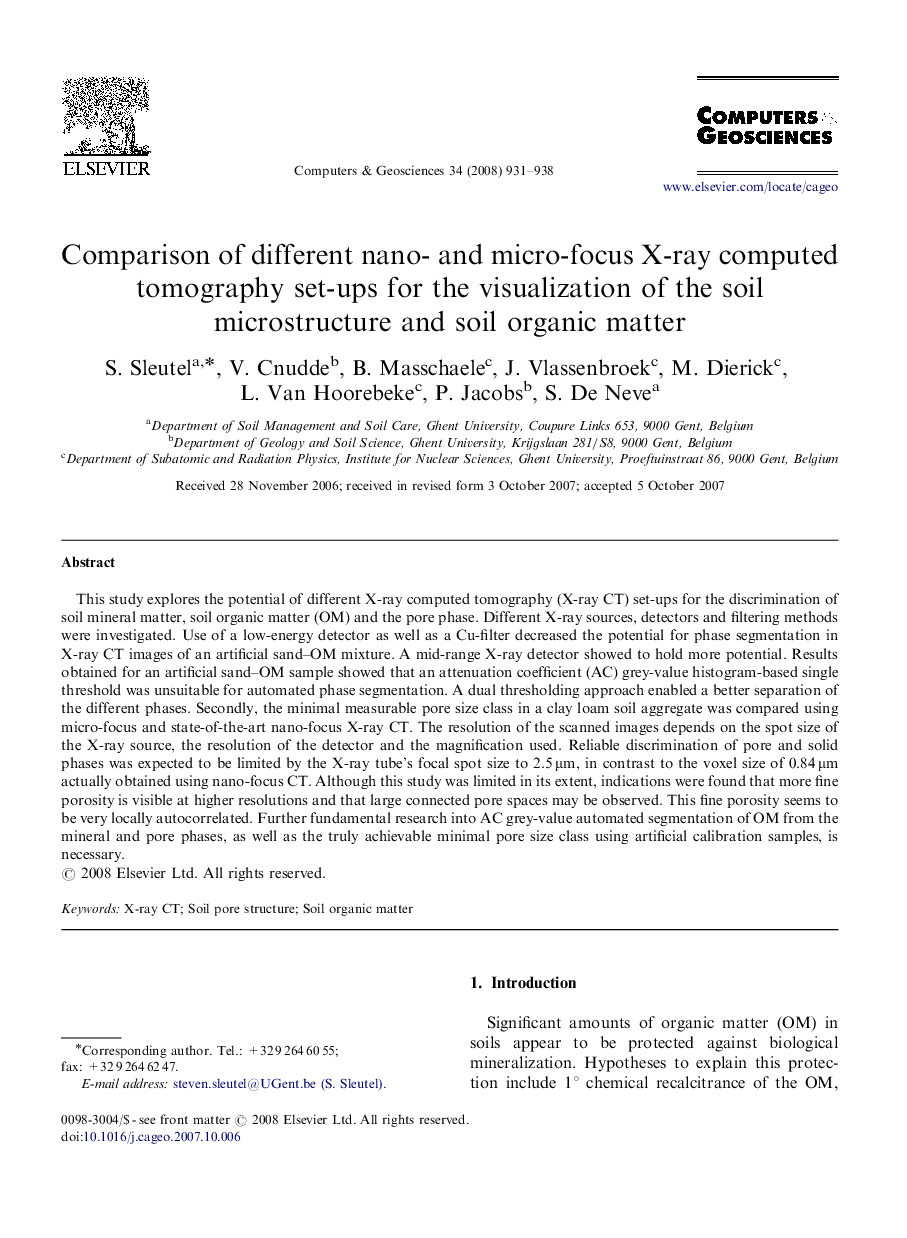| Article ID | Journal | Published Year | Pages | File Type |
|---|---|---|---|---|
| 508428 | Computers & Geosciences | 2008 | 8 Pages |
This study explores the potential of different X-ray computed tomography (X-ray CT) set-ups for the discrimination of soil mineral matter, soil organic matter (OM) and the pore phase. Different X-ray sources, detectors and filtering methods were investigated. Use of a low-energy detector as well as a Cu-filter decreased the potential for phase segmentation in X-ray CT images of an artificial sand–OM mixture. A mid-range X-ray detector showed to hold more potential. Results obtained for an artificial sand–OM sample showed that an attenuation coefficient (AC) grey-value histogram-based single threshold was unsuitable for automated phase segmentation. A dual thresholding approach enabled a better separation of the different phases. Secondly, the minimal measurable pore size class in a clay loam soil aggregate was compared using micro-focus and state-of-the-art nano-focus X-ray CT. The resolution of the scanned images depends on the spot size of the X-ray source, the resolution of the detector and the magnification used. Reliable discrimination of pore and solid phases was expected to be limited by the X-ray tube's focal spot size to 2.5 μm, in contrast to the voxel size of 0.84 μm actually obtained using nano-focus CT. Although this study was limited in its extent, indications were found that more fine porosity is visible at higher resolutions and that large connected pore spaces may be observed. This fine porosity seems to be very locally autocorrelated. Further fundamental research into AC grey-value automated segmentation of OM from the mineral and pore phases, as well as the truly achievable minimal pore size class using artificial calibration samples, is necessary.
